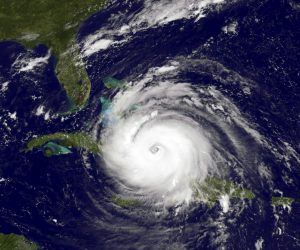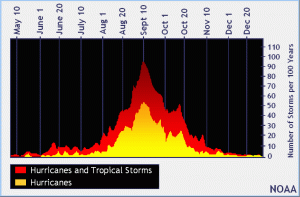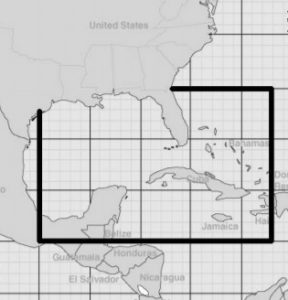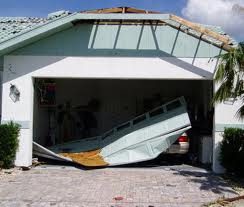
Tropical weather systems are once again in the headlines and at the forefront of millions of property owners’ and tenants’ minds, so it seemed like a good time to dust off this two-post series on hurricane preparation for landlords in the Tampa Bay area!
A quick aside: Prior to my real estate career, I was once a county Emergency Management official in the Tampa Bay area, so I know a little about the meteorology, tracking, evacuations, government response, and aftermath of tropical storms and hurricanes. In yet another life, I was the Director of Risk Management for a local community college district, so I know a thing or two about risk management and insurance as well.
But the intent of this series is to fast forward through most of those boring details and get right down to the brass tacks of What does Hurricane Season mean for landlords and property managers in the Tampa Bay area?
Before I do so, I do want to make one key point here: A major hurricane making landfall in any specific location is an extremely rare event; the last major hurricane to make landfall in the Tampa Bay area was in 1921! But hurricanes are what we refer to as a low frequency / high impact event. They can have a catastrophic impact on a region, so it behooves us to be prepared.
The Atlantic Hurricane Season
 The Atlantic Hurricane Season officially starts on June 1st, and officially ends on November 30th. It is rare (but not completely unheard of) to see tropical weather systems develop outside of this date range, mainly due to seasonal meteorological trends such as sea surface temperatures.
The Atlantic Hurricane Season officially starts on June 1st, and officially ends on November 30th. It is rare (but not completely unheard of) to see tropical weather systems develop outside of this date range, mainly due to seasonal meteorological trends such as sea surface temperatures.
Within that 6-month window of Hurricane Season, there are some trends worth noting:
Early in the season (June-July), it’s much more common for tropical storms to develop closer to Florida in the Gulf of Mexico or the Caribbean. These smaller, disorganized storms don’t usually pack the same punch as a major hurricane, but they can dump a ton of rain in the area where they make landfall, causing localized flooding, school and government closures, and general chaos.
Later in the season (August, September, and early October) is when we tend to see storms developing far out into the Atlantic Ocean – some are tracked from as far away as the West Coast of Africa near the Cape Verde Islands. These large storms have plenty of time, and plenty of warm water in their path, which can allow them to develop into major hurricanes. These major storms from later in the season tend to the be the ones you’ve probably heard of, such as Andrew, Katrina, Ivan, Ike, Sandy, Irma, Florence, Ian, and Idalia.
Preparing for Hurricane Season
Insurance
One of the most important things you can do to protect your financial interests is have a meeting with your insurance agent and make sure you have appropriate insurance coverages in place. Most homeowners policies come with a higher deductible for “named storm coverage” – you should know how much this deductible is for your policies and make sure you can cover it if needed.
In addition, some homeowners are surprised to hear that their homeowner’s insurance does not cover flood damage, or that their flood insurance (if they carry it) does not cover “wind driven rain”.
Bottom line: Spend a couple of hours hanging out with a good insurance agent and check on this stuff! It will be time well spent.

Another side note, and sort of an interesting quirk of doing business in real estate in the Southeast during hurricane season: Insurance carriers will not bind coverage, write any new policies, or make any changes to your policy when there is a named storm located in “The Box” – which, as the name implies, is simply a box drawn on the map by insurance giant Lloyd’s of London. If you have a real estate closing taking place during hurricane season, it can help immensely if you and your team are cognizant of this.
Roof
Aside from flooding, the other main threat from tropical storms and hurricanes is wind damage. We’ve all see videos of a home’s roof peeling off like the top of a sardine can in hurricane force winds. This phenomenon is actually caused by two things: poor uplift resistance of the roof itself, and wind penetration into other openings such as windows, doors, and garage doors. The wind basically makes a two-pronged attack on the roof: It pulls up on the roof from above, and pressurizes the attic and pushes up on the roof from below.

There are essentially two ways to mitigate this risk: 1) Increase the uplift resistance of your roof, and 2) Protect the exterior envelope of your home from wind penetration with impact rated windows, storm shutters, and other coverings.
Increasing the uplift resistance of your roof is, for the most part, something that was done to meet the current building codes when the building was constructed. In some cases, it is possible to retrofit your roof with tie down straps or “hurricane clips”, but in many cases, the areas where these need to be installed are extremely difficult or impossible to get to, or are best done during a total roof replacement.
So, for the purposes of this post, we’ll focus more on impact windows, storm shutters, and other coverings.
Windows, Doors, and Other Openings
When it comes time to replace or upgrade your windows, you will likely find that your local building codes require you to install impact-rated windows, or (if not installing impact-rated windows), install approved storm shutters.
Impact-rated windows are a great investment, particularly on rental properties. Impact-rated windows require you, your tenant, or your property manager to do essentially nothing to prepare your windows for a storm: Shut the windows, and you’re done!
Conversely, you can buy the best storm shutters in the world, and they will do you absolutely no good if your panicked tenant or overworked property manager is unable to install them when needed. In addition, unless they are permanently installed, storm shutters tend to sit in the garage, attic, or shed for literally years between use. This can make them difficult to find, piece together, and install when the time comes (in addition to plywood, Home Depot and Lowe’s sell out of wing nuts every time a storm approaches – because we Floridians tend to lose the hardware for our storm shutters!)
Speaking of plywood – it’s a terrible material to use for storm shutters! It’s heavy, difficult to transport, store, and install, and it actually doesn’t meet the Florida Building Code missile impact test requirements for storm shutters. It amounts to a “better than nothing” solution.
Instead of plywood, consider purpose-made materials such as Fabric Shield or Storm Busters if you need to cover an opening. These are great for odd-sized openings such as gable vents and pet doors, or for non-impact rated openings such as sliding glass doors and French doors. They are lighter, better, and easier to transport, store, and install than plywood. As you probably already know, you will not find these awesome products on the shelf when a storm is approaching. It’s best to do these things whilst the sun is shining!

Garage Doors
Finally, don’t forget about the garage door. For most Florida homes, the garage door is the single weakest point of entry for high winds. There are a few options here: 1) Install an impact-rated garage door, 2) Have your garage door professionally reinforced, or 3) Cover the opening with one of the products mentioned above, such as Fabric Shield.
Click here for the second post in this series where we’ll get into pre- and post-landfall issues you’re likely to face as a landlord, and questions your tenants are likely to ask you when a hurricane is approaching.
Better yet, sign up here to get our entire educational series for Tampa Bay real estate investors and get notifications about new posts!
